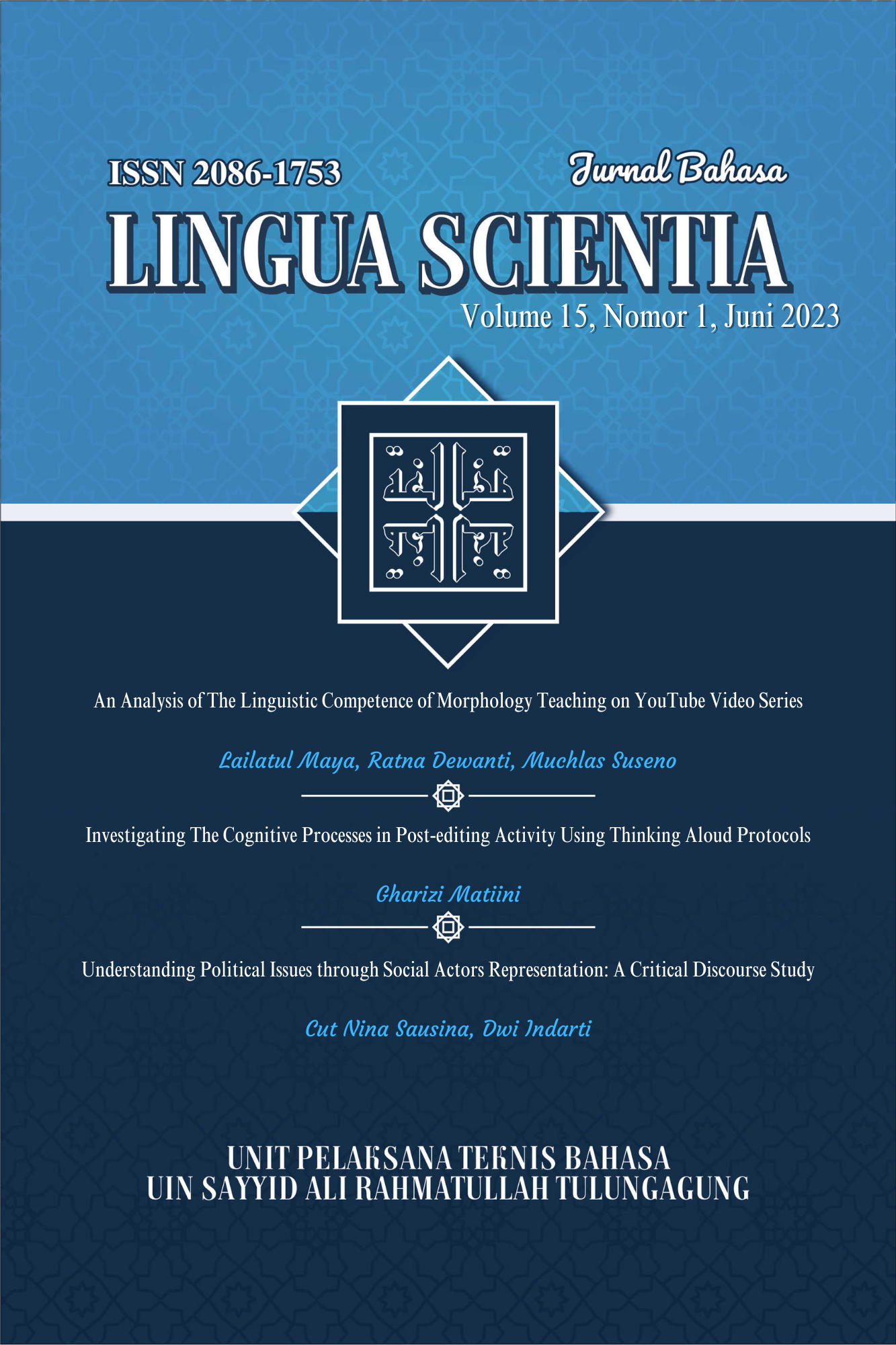INVESTIGATING THE COGNITIVE PROCESSES IN POST-EDITING ACTIVITY USING THINKING ALOUD PROTOCOLS
Abstract
The study aims to investigate the cognitive processes and meta-cognitive strategies used by the post-editor when doing the post-editing activity. It examines the way the post editor reads, thinks, speculates, and makes decision to the machine translation results and correcting the problems founds from the translated text. Thinking Aloud Protocols (TAPs) is used as the approach of the study to record the meta-cognitive strategies applied by the post editor. Several instruments such as video recording tools, machine-translated text, and timer are operated during the data collection. From the study, it is shown that reasoning and problem solving become the most running strategy from the post-editor. It occurs since the post-editor mostly looks for the problems and tries to find a way of correcting mistakes from the translation. The result also shows that the post-editor tries to comprehend the problems and decides the accurate decision when song the post-editing. The cognitive process and meta-cognitive strategies are quite different between the translator and the post-editor.
Downloads
References
Eftekhary, Ali & Aminizadeh, Shayesteh. (2012). Investigating the Use of Thinking Aloud Protocols in Translation of Literary Texts. Theory and Practice in Language Studies, 2. DOI: 10.4304/tpls.2.5.1039-1047.
Gerloff, P. (1986). Second language learners reports on the interpretive process: Talk-aloud protocols of translation'. In J. House & S. Blum-Kulka (eds.), Interlingual and Intercultural Communication. Tübingen: Gunter Narr. 243–62.
House, J. (2000). Consciousness and the strategic use of aids in translation. In S. Tirkkonen-Condit and R. Jääskeläinen (eds). Tapping and Mapping the Process of Translation: Outlooks on Empirical Research. Amsterdam’ Philadelphia: John Benjamins, pp. 149-162.
Hutchins, E. (2000). Distributed Cognition, http://files.meetup.com/410989/ Distributed Cognition.pdf (Accessed 2 January 2022).
Jakobsen, A. L. 2003. Effects of Think Aloud on Translation Speed, Revision and Segmentation. In: Alves, F. (ed) Triangulating Translation. Perspectives in Process Oriented Research. Amsterdam: Benjamins. 69-95.
Krings, H. P. (1986). Translation problems and translation strategies of advanced German learners of French (L2).In J. House & S. Blum-Kulka (eds.), Interlingual and Intercultural Communication. Tübingen: Gunter Narr. 263–75.
Krings, H. P. 2001. Repairing texts : Empirical investigations of machine translation post-editing processes. Kent, Ohio: Kent State University Press.
Kussmaul,P.&Tirkkonen-Condit,S.(1995).Think aloud protocol analysis in translation studies.TTR,8(1),177-199.
Mesa-Lao, B. (2013). Eye-tracking post-editing behaviour in an interactive translation prediction environment. In K. Holmqvist, F. Mulvey. & R. Johansson (eds.), Book of abstracts: 17th European Conference on Eye Movemement, 541. Lund University.
Reifler, E. (1952). Linguistic analysis, meaning and comparative semantics. Lingua, 3, 371-390.
Séguinot, C .(1991). A study of student translation strategies. In Tirkkonen-Condit, S. (ed) Empirical research in translation and intercultural studies. Tübingen: Gunter Narr. 79–88.
Copyright (c) 2023 Gharizi Matiini

This work is licensed under a Creative Commons Attribution-NonCommercial 4.0 International License.
Before going to review process, all manuscripts will be checked that they are free from plagiarism practice using "Turnitin" software. If there is an indication of plagiarism, the manuscript will instantly be rejected.


